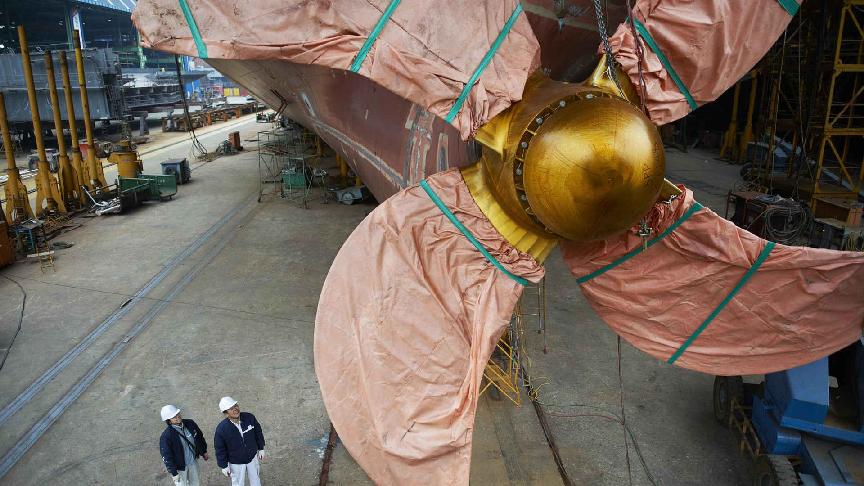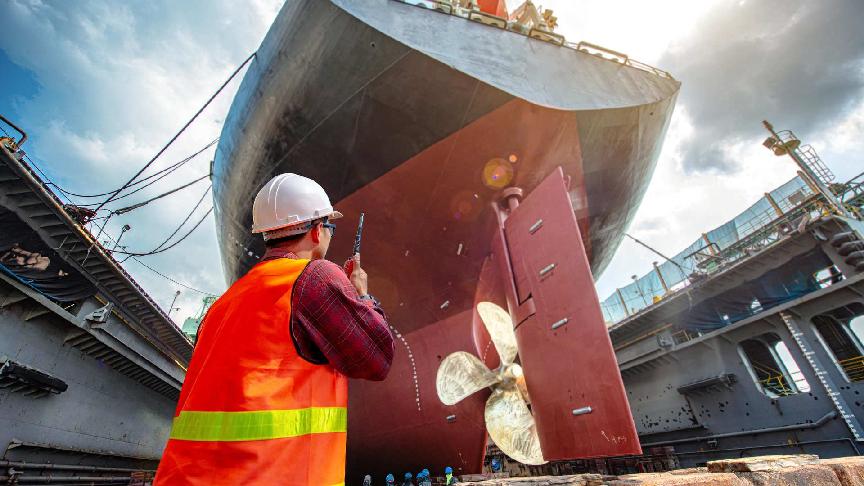As a leader in sea logistics, Kuehne+Nagel closely tracks and collects data on the movement of vessels, including actual arrivals and vessel delays. Kuehne+Nagel will be publishing a summary of this analysis in monthly Schedule Reliability reports based entirely on neutral data. This summary is available within SeaNews in seaexplorer as well as in myKN for all Kuehne+Nagel customers and myKN subscribers.
Global On-Time Performance
Schedule reliability added 5.4% in May to reach 69.3%. This month-on-month improvement is the highest since February 2023. If we compare it to the beginning of the year in January, the progress exceeds 16 percentage points. A significant increase was also achieved year-on-year, as the global on-time performance progressed over 30 percentage points from 39.1% in May 2022. An important element to highlight here is that major carriers blanked nearly 8% of sailings during the month of May and plan to blank around 20 sailings in June across major East-West head-haul trades.
The global monthly average delay in the arrival of LATE vessels did not witness similar progress. The graph below shows that the monthly average remained practically the same in May (at 3.6 days) compared to April (3.5 days). However, compared to last year, LATE vessels' monthly average arrival delay improved by 20% from 4.5 days.

Data for ALL vessels had a similar trend as LATE vessels this month. The average improved slightly month-on-month by only 0.1 days in May. Nevertheless, the improvement exceeds 50% year-on-year. The global monthly average delay in the arrivals of ALL vessels was 2.4 days in May 2022 and dropped to 1.1 days in May 2023.
Reliability per Trade Lane
To begin with, all three major trade lanes (trans-Pacific, trans-Atlantic and Asia-North Europe) had positive progress this month in terms of schedule reliability. The trade that progressed the most compared to April 2023 was the trans-Atlantic, jumping nearly 17% from 47.8% in April to 64.7% in May. The trans-Pacific trade improved 4% to 57.8% and Asia-North Europe improved 6% to 70.6%.
Moving to all main lanes shown in the following chart, the lane with the highest reliability was North Europe-South America, with 87.8% on-time performance. The Mediterranean-North American trade saw the highest progress this month, increasing nearly 19 percentage points month-on-month to 69.9%. Vessels travelling between Asia and the Mediterranean/Black Sea had the lowest reliability in May, with 55.1% reliability.
Reliability on the Asia - Oceania trade
This month we added Asia-Oceania to the mix, and we will take a closer look at how it has progressed since January 2023. The on-time performance of vessels sailing from Asia to Oceania dropped 2% to 72.9% in May. The percentage remains, however, significantly higher than the January percentage of 51.2%. The monthly average delay in the arrival of LATE vessels on both directions of this trade was 3.2 days. In contrast, the same average for ALL vessels was lower than one day at 0.8 days.
A different trend was observed for the performance of vessels moving from Oceania to Asia. Here we see a month-on-month progress in schedule reliability with a 4.4% increase from April. With 75.1% on-time performance in May 2023, the yearly progress was very high. The chart below shows an increase of over 40 percentage points from 31.8% in May 2022.

Conclusion
From a slight drop in April, the on-time performance achieved 5.4% increase to 69.3% in May. A year-on-year comparison shows progress of over 30 percentage points.
The North Europe – South America trade had the highest on-time performance among all main trade lanes with 87.8% reliability. Of the three major trade lanes (trans-Pacific, trans-Atlantic and Asia-NE), Asia-North Europe had the highest performance at 70.6%.
It is worth noting here, blank sailings data show that major carriers blanked nearly 8% of sailings during the month of May and plan to blank around 20 sailings in June across major East-West head-haul trades.
Methodology
Calculating the on-time performance
To calculate the on-time performance of a service, Kuehne+Nagel uses vessel schedules from carrier(s) offering that service. Only carrier schedules that match our quality criteria are used for the schedule reliability calculation.
As carriers update schedules constantly, they become more accurate the closer vessels get to a destination port. For this reason, we have implemented a "schedule freeze period" of 14 days prior to actual vessel arrival. In other words, we benchmark the actual arrival with what carriers last announced 14 days earlier. To identify the actual time of arrival, Kuehne+Nagel consumes AIS (Automatic Identification System) vessel data. All vessels which arrive within a +/- 24-hour window at the port of destination compared to the last announced arrival are considered to be on time.
Assigning carrier services to multiple trade lanes
Many services operate on various trade lanes (e.g. a carrier service between Asia and North Europe also calls ports in the Middle East and or the Mediterranean), and therefore carrier services may be listed in multiple trade lanes.
Definition of trade lanes
There is no common standard for the definition of trade lanes. This means, depending on the source, you will find different trade lanes as well as different regions, countries and ports assigned to a trade lane. Kuehne+Nagel has defined its own way of mapping and has assigned ports to these trade lanes accordingly. On-time performances of vessels are captured in our reports on defined main trades, meaning trades moving large container volumes on vessels. Therefore, niche trades and services within one trade, called „Intra Trade“ services (e.g. Intra-Asia, Intra-Europe) are currently out of scope.







